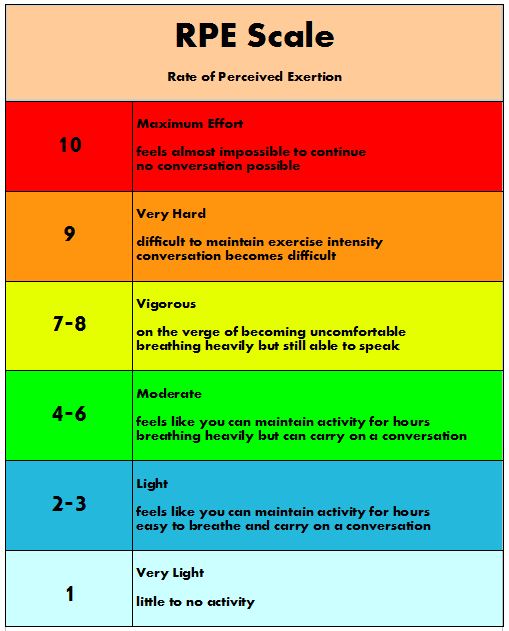Let’s say you’re like Ellen, the client I described in my last post. You might have been fit once, but life has gotten in the way and you’re now returning to the gym in a state of, let’s say, less-than-perfect conditioning.
 When you walk in, I know you’re uncomfortable. There is a big purple sign bragging about how the gym is judgment-free, but you’re skeptical. I mean, look at all the Barbie-doll-looking women and musclebound men. And musclebound women! You may feel like you’re the only one who feels out of place and doesn’t know what they’re doing.
When you walk in, I know you’re uncomfortable. There is a big purple sign bragging about how the gym is judgment-free, but you’re skeptical. I mean, look at all the Barbie-doll-looking women and musclebound men. And musclebound women! You may feel like you’re the only one who feels out of place and doesn’t know what they’re doing.
Maybe you’re seeing people who look just like the kids who teased you in middle school phys ed.
Maybe they ARE the kids who teased you in middle school phys ed.
Maybe you’re getting anxious just thinking about all this.
Take a deep breath, let it out, and go read this.
Better?
You are going to get through this, and I’ll tell you why. It’s because YOU have a plan. Before you ever packed your gym bag, you’ve taken the time to think about what you are going to do, and established your goals. You’ve written them down, and the crib sheet is in the pocket of your shorts. The goals are challenging but realistic. Setting your goals is that single first step on a thousand-mile journey; and your workout plan is the map. The map is for you and only you, and what others are doing around you may be interesting to watch, but we are not concerned with comparisons.
With that in mind, let’s get started.
When designing a workout plan, we need to look at four aspects of exercise:
Frequency
Intensity
Time
Type
Hey, that spells FITT. Neato! Each of these four aspects will be decided based on your medical and workout history. In this example, we’re planning for a middle-aged female who used to be quite fit but has not worked out in a long time. She has been medically cleared to work out and has no history of major illness or injury.
Frequency
Even though this workout plan is for a previously very active individual, it’s important to start slowly. What we do in the gym is meant to last a lifetime, and no one can go from zero to Ahnold overnight — not even Ahnold himself!
So push yourself, but don’t get so sore today that you won’t want to come back tomorrow.
About muscle soreness: you will get sore, especially in the first few weeks. Later on, it won’t be as bad, I promise. To allow for your body to learn how to recover, we’re shooting for 2 or 3 workouts per week to begin.
Intensity
You will notice that there are charts and graphs right on your gym’s cardio equipment to help you plan the intensity of your workout. This massively confusing array of beeping equipment and numbers in teeny-tiny print is designed to help keep you at the correct Target Heart Rate (THR) for the type of exercise you are doing. It makes the machine look very complicated but guess what? You can totally ignore all that stuff and get a great workout! Sure, you can drive yourself crazy watching your heart rate go up and down, and worrying whether you’re in the “fat burn” zone, or the “cardio” zone. But (and you will surely be relieved to hear this) these measurements are totally unnecessary for our purposes. If you’re basically healthy, the only “zone” you need to worry about is the “on the treadmill” zone. You showed up, and are developing a new habit. You are already doing it right! All you need to do is listen to your body. For those folks who find visual guidelines useful, check out this much more user-friendly chart:
In your first week or two, there is no reason to go above 6 on this scale.
Seriously, don’t do it.
Time
About an hour, total. This is kind of long for a first workout, but it is broken up into several activities and includes the warm-up and cool-down.
Type
No matter what type of exercise you choose, workouts should always include a warm-up phase, a work phase, and a cool-down phase. Each part is important in keeping you safe and preventing injury.
In this case, we’re starting with some simple, gym-based activities.
WARM-UP: five minutes on the treadmill or elliptical
Don’t skip this! It gets the heart rate up a bit and warms the muscles in preparation for everything else. There’s no need for speed here, either — just a slow and steady buildup to the point where you might get a little out of breath.
WORK PHASE 1: Upper-body strength training, mostly with free weights: 15 minutes
Nothing fancy here, just some old, familiar exercises with much lighter weight than was used in the past. Emphasis here is on form, so that the body can remember how exercises are done while avoiding excessive soreness or injury.
Should I Use Free Weights or Machines? Good question! So good that it deserves its own blog post. In the meantime, don’t use any machines if you’re not familiar with them. Get a gym staff member to help you learn to adjust it. Believe me, they will be more than happy to help you — it gives them a break from mopping floors and scrubbing toilets.
WORK PHASE 2: Treadmill walking: 30 minutes
In a deconditioned person, walking not only works the cardiorespiratory system and lower body but also the supporting muscles of the upper body (the core). Good form (head up, shoulders back, NOT holding onto the hand rails) maximizes the benefit to the core. Twenty to thirty minutes is just about the longest duration I would recommend in a first workout, and in fact if you’re severely deconditioned, as little as ten minutes may do the job. In your first couple weeks, don’t bother with the incline settings either — just go faster or slower on a level surface.
Important Safety Tip: If you are done with your treadmill walk and are really winded, do NOT jump off and go sit down! Slow your pace and stay with it for a few more minutes, until you get back down to a 3 at most on the RPE scale. If you just can’t stand to be on the treadmill for another second, take 5 minutes to walk around the gym and let your muscles settle. The important thing is to keep moving.
COOL-DOWN AND STRETCH: 10 minutes
This is where you relax and and talk sweetly to all those muscles you just worked, so that they will be nice to you in the morning. Thank them for a job well done. Drink some water now, and some more later; hydration helps minimize muscle soreness. Some basic stretches to get you started.
The most important thing is to stretch slowly and gently. Don’t bounce. Hold stretches for 30 seconds to a minute. You should feel the tightness of the stretch but there should not be any pain. Remember to breathe. (You might laugh that I’m telling you this, but wait ’til you catch yourself holding your breath! It happens.)
What are the best stretches to use? My body is too big/small/inflexible to do the things they’re doing in the pictures. And do I have to get down on the floor? I hate getting up off the floor! Good questions all! So good that this topic deserves its own blog post. In the meantime, don’t do things that hurt, or that make you uncomfortable.
And with that, we’re done. Have another drink of water and enjoy that delicious “good tired” that comes from doing something nice for your body.
If this workout seems underwhelming, that’s because it was meant to be. But it accomplished three things:
- you showed up;
- you made a constant effort for a full hour; and
- you now have a feeling of accomplishment that I hope makes you want to come back and do this again, soon.


Written by admin
Leave a comment